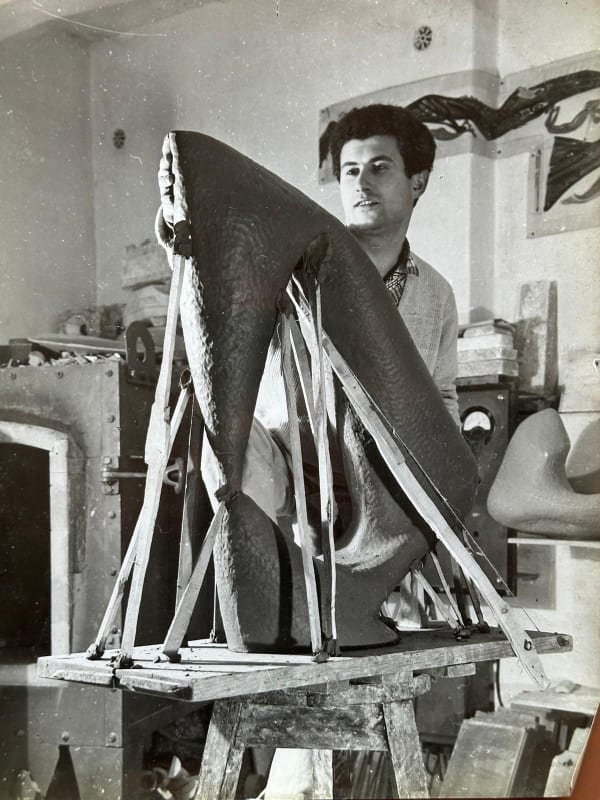Born in Comiso, Sicily, Salvatore Meli quickly emerged as one of the most distinctive sculptors of post-war Italian ceramics. After training in Florence and a brief collaboration in Milan, he settled in Rome in 1950, where he worked at the Villa Massimo alongside Marino Mazzacurati, Renato Guttuso, and Leoncillo Leonardi. As early as 1951, Gio Ponti invited him to exhibit at the Milan Triennale, the same year he won the Premio Comiso. Within two years, he had triumphed at the national competitions of Pesaro, Messina, and Faenza - where, at just twenty-three, he was awarded the prestigious Premio Faenza with a monumental vase painted with archaic battle scenes.
Over the following decades, Meli became a central figure in Italian and international ceramics. His works were shown at the Venice Biennale, the Rome Quadriennale, and the Triennale di Milano, as well as in London, New York, San Francisco, Buenos Aires, and Prague. He was honored with numerous prizes, including multiple Premi Gaetano Ballardini and the Gold Medal of the President of the Republic. A dedicated teacher at the Accademia di Belle Arti in Rome, he influenced generations of artists, while his studio on the Via Appia Antica became a workshop for monumental ceramics, sculpture, and architectural commissions.
Meli’s art is distinguished by its sculptural vitality. Rejecting the potter’s wheel, he shaped his vases by hand in a process likened to a dance - pressing, twisting, and weaving the clay until it stood, asymmetrical and alive, like a body caught in motion. His works fuse Mediterranean archaism, tribal echoes, and modern abstraction into dynamic forms, their vibrant glazes enhancing their acrobatic balance. With this organic energy and expressive force, Meli forged a language entirely his own - a personal signature, a true patte d’artiste, instantly setting his creations apart and making them unmistakable.

